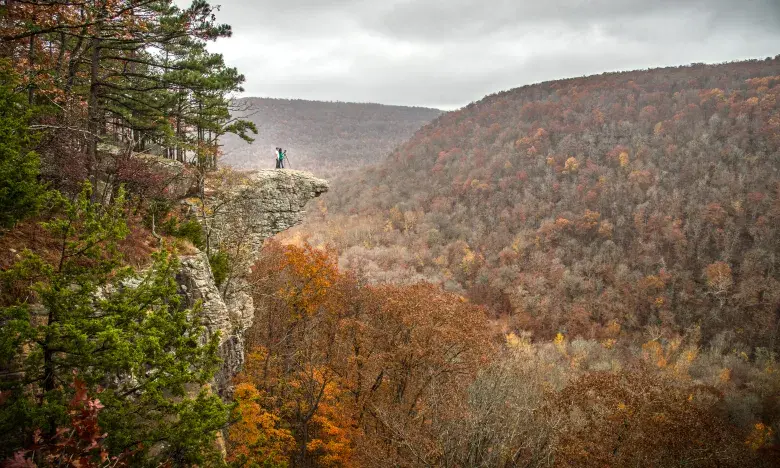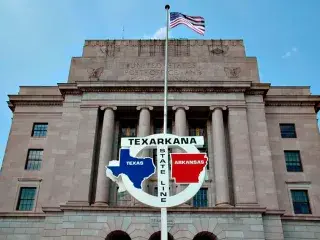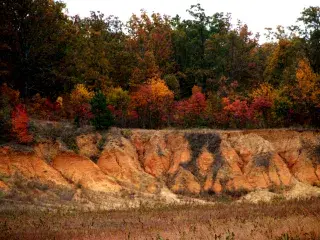Get an idea of the Arkansas weather forecast for your next vacation
Arkansas weather is mild and typically pleasant. No matter what time of year you plan on visiting Arkansas, you'll find The Natural State offering beautiful scenic views and plenty of opportunities for outdoor adventure. With four distinct, yet temperate, seasons, Arkansas is the perfect year-round vacation destination. Spring and fall are particularly mild with hot and humid days in late summer and during winter months when temperatures occasionally dip into the teens or below, especially with wind chill.
The Arkansas weather forecast often changes dramatically due to surrounding weather influences. When two or more weather systems merge, clouds form, temperature changes and precipitation often follows. Arkansas' central location allows weather systems from all directions to influence its climate.
Select a month below to view Arkansas weather averages based on previous years. This information is intended for general planning purposes only – data varies by region and can change year-to-year. Please contact the National Weather Bureau at (501) 834-0308 or visit www.weather.com for an up-to-date Arkansas weather forecast before you start your trip.
Arkansas Average Weather by Month
January
- Average maximum temperature: 49.5°F
- Average minimum temperature: 28.8°F
- Average precipitation: 3.1 inches
- Average snowfall: 2.3 inches
- North/northeasterly winds
January temperatures often fall below the average minimum and occasionally drop to the 0 range. January is usually the heaviest snowfall month. By most standards, January road conditions are good; however, during early morning and late evening hours, ice patches are common. This is particularly true in rural areas due to low traffic volumes. Severe ice storms and freezing rain occur most frequently during the month of January
February
March
- Average maximum temperature: 62.5°F
- Average minimum temperature: 40.2°F
- Average precipitation: 4.8 inches
- Average snowfall: 0.5 inches
- West/southwesterly winds
March gradually signals the beginnings of spring; however, it is common to see one last snowfall. During the latter part of the month, leaves and flower buds begin opening to welcome the warmer temperatures
April
- Average maximum temperature: 73.6°F
- Average minimum temperature: 50.3°F
- Average precipitation: 5.5 inches
- Southwesterly winds
April is considered to be the first true spring month with more consistent warmer temperatures. April also has the highest average rainfall and occasional potential for tornadoes. This early spring period is the time when the cabin fever blues of winter are washed away by spring showers and sunshine.
May
- Average maximum temperature: 80.1°F
- Average minimum temperature: 58.7°F
- Average precipitation: 6.5 inches
- Northwesterly winds
May is one of the most popular months in Arkansas for traveling. The weather is moderate, early wildflowers are abundant, and trees are beginning to show plenty of new growth. Rivers, streams, and waterfalls swell with heavy flows from spring rains and provide many photo opportunities.
June
- Average maximum temperature: 89.5°F
- Average minimum temperature: 68.3°F
- Average precipitation: 3.3 inches
- Southwesterly winds
June is the month when the heat and humidity of the sunny summer days begin to be noticeable. Temperatures still remain fairly moderate, skies are mostly clear and participation in outdoor activities remains high. The early part of the month is usually quite pleasant.
July
- Average maximum temperature: 91.7°F
- Average minimum temperature: 70.4°F
- Average precipitation: 3.8 inches
- Southwesterly winds
The old saying "Hot as a Fourth of July firecracker" applies particularly toward the end of the month. Highs can reach triple-digit temperatures for short periods. Late July through early September generally signals a marked decrease in strenuous outdoor activities. This is a time when water sports are certainly the most popular activities. Be sure to apply sunscreen to block harmful UV rays from the sun when outdoors.
August
September
- Average maximum temperature: 85.5°F
- Average minimum temperature: 61.6°F
- Average precipitation: 3.0 inches
- South/southeasterly winds
September is the slow transition from summer heat to the cooler weather of autumn. During the first half of the month, summer usually tends to drag on; however, pleasant conditions usually prevail by the last week of the month.
October
- Average maximum temperature: 74.5°F
- Average minimum temperature: 49.3°F
- Average precipitation: 3.5 inches
- North/northeasterly winds
October truly signals the beginning of autumn. Fall colors begin to appear in the Ozarks and other northern sections of the state by the second week in October and continue slowly southward. Mid to late October generally provides peak fall color in the northern portions of Arkansas. October and November are two of the most popular months for visitors due to the beautiful fall colors and favorable weather.
November
- Average maximum temperature: 61.2°F
- Average minimum temperature: 33.5°F
- Average precipitation: 5.3 inches
- Average snowfall: 0.3 inches
- Northwesterly winds
Light frost starts to become common during this month. The first of November is generally peak fall color in the central to southern parts of the state. As the month progresses, cold can begin to set in.
December
- Average maximum temperature: 53.3°F
- Average minimum temperature: 34.3°F
- Average precipitation: 4.9 inches
- Average snowfall: 0.8 inches
- Northwesterly winds
December signals the beginning of the winter chill with heavy frosts becoming quite common. This is the preferred winter month for those who prefer colder weather.









